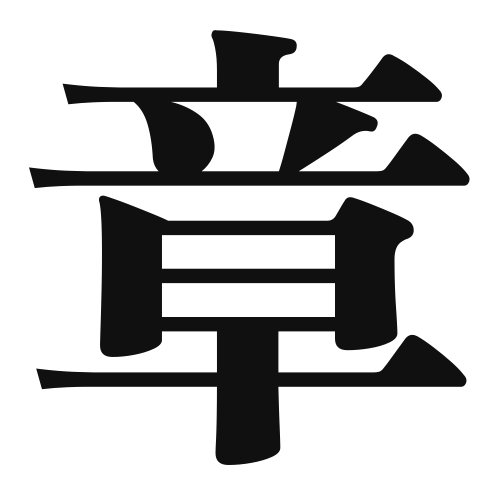1. Overview of Meaning
The kanji “章” (shou) generally means “chapter” or “section.” It is often used to denote divisions in books, documents, or other written works, indicating a specific part or theme within the larger context.
2. Formation and Radical
The kanji “章” is a compound character that combines elements to convey its meaning. It consists of the radical 衣 (clothing) at the bottom, which relates to the concept of “decorative” or “ornamental,” and the phonetic component 章 (shou) at the top, which contributes to its pronunciation.
3. Examples of Usage
Common words and phrases that include “章” are:
- 章立て (shoudate) – chapter division
- 章句 (shouku) – verse or stanza
Example sentence in daily conversation:
「この本の第一章はとても面白いです。」
(Kono hon no dai-isshou wa totemo omoshiroi desu.)
This translates to: “The first chapter of this book is very interesting.”
4. Synonyms and Antonyms
Similar kanji with related meanings include:
- 節 (setsu) – meaning “section” or “paragraph,” but often refers to smaller divisions than “章.”
Antonyms include:
- 全体 (zentai) – meaning “whole” or “entirety,” which contrasts with the idea of a specific chapter or section.
5. Cultural and Historical Background
The kanji “章” has significant ties to Japanese culture, particularly in literature and education. It is commonly used in the titles of books and academic texts to organize content.
Proverbs and idiomatic expressions that include “章” are less common, but the concept of chapters is often referenced in discussions about storytelling and narrative structure.
